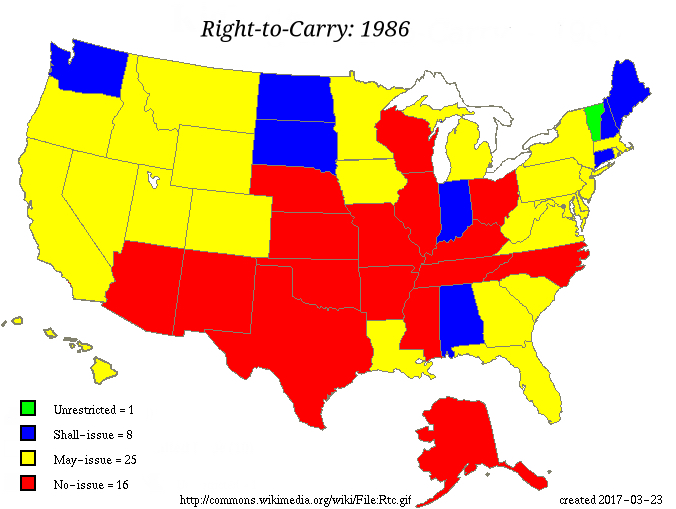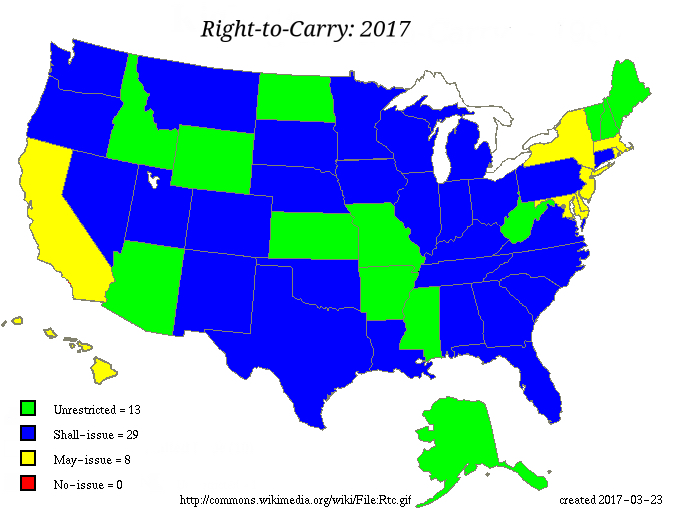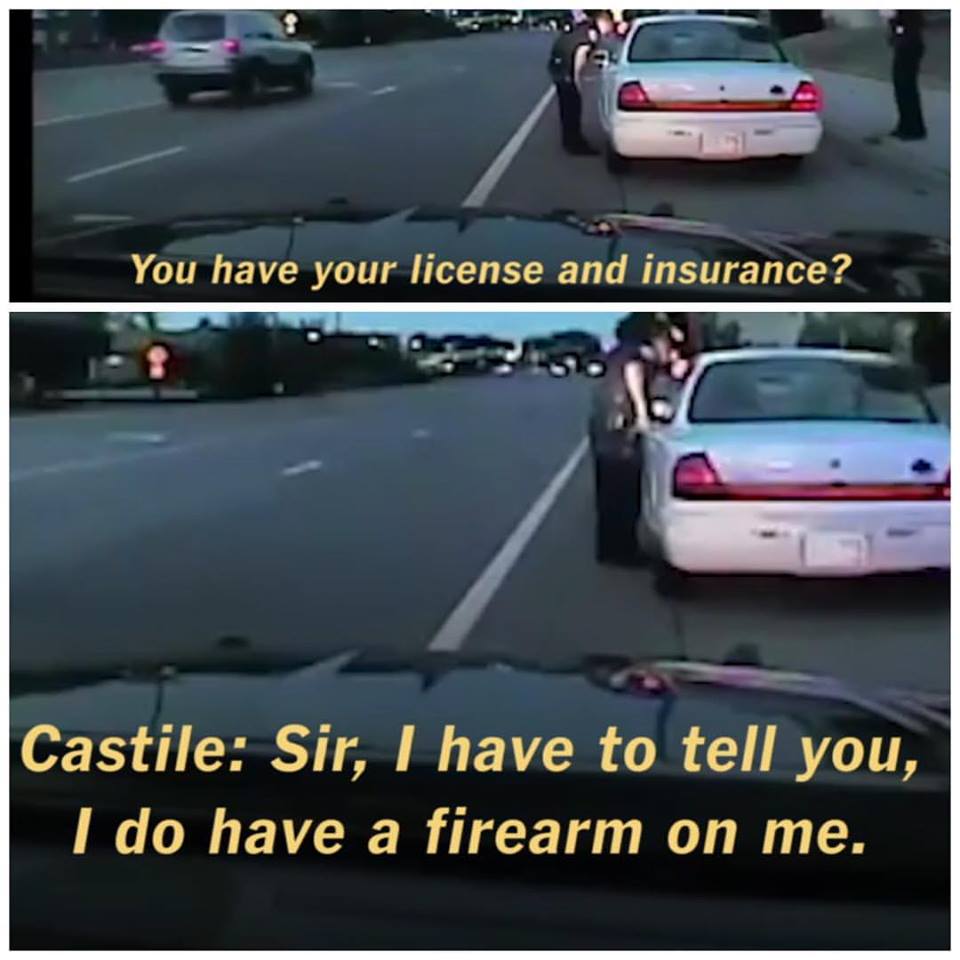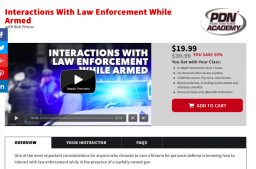If the aftermath of last summers breakdown of relations between portions of our society an the police, one thing we did here at PDN was to put together a distance education course on Interacting with Law Enforcement While Armed. I have been carrying a gun for almost three decades now and I’ve spent the majority of that time as a reserve or full time police officer as well. I travel the country almost constantly since 2008 and have had many interactions with officer while armed. I’ve also had a few interactions with both legally and illegally armed people while in uniform. I have provided thousands of hours of training to both Law Enforcement Officers and Concealed Carriers of Defensive Firearms. I think I have a pretty good understanding of the challenges from both sides. So, what do I think we can learn from the Castile Shooting? First, we have to establish which “we” I am talking about: The Police Officer:
Police Officer Training needs to evolve and get caught up with the growth of Concealed Carry across our country. Nowhere during my 600+ hr Police Academy or in my times in Field Training Status with various agencies was there a specific block of instruction on dealing with a legally armed people. The fact is that before the mid-1990’s there just weren’t that many people carrying concealed. For most of the era of modern policing in this country, chances were very high that if a police officer came into contact with someone carrying a gun, they were violating at least one law and probably a downright “criminal” person. Keep in mind that in the mid-1980’s there were almost 16 states that had No Provision for Legal Carry (including Texas and Alaska!) and 25 more only had may issue provisions, some of which (including NJ, CA and NV) were very restrictive. The training I received at the Academy in the 1990s was informed by the experience of officers who rarely came across someone who was what we would today consider the “typical CCWer”; a law abiding, pro-police, pro-rule-of-law, patriotic Citizen.

Things really started to change in the mid-1990s and today, there is a provision for carry in every single State, most of the States operate under a Shall Issue law where you can get a carry permit without any special justification as long as you are not prohibited (ie- rightfully infringed) for legal or mental health reasons and over a dozen States offer unrestricted carry rights that don’t even require a permit! The landscape has certainly changed.

Which brings us back to the Castile Shooting. In today’s America, police officers cannot afford to jump to the conclusion that anyone carrying a gun is up to no good. There are now millions of legally armed, trained, responsible ‘Merica-Loving citizens out there. Cops are going to come into contact with them more and more often on traffic stops, routine investigations, while taking reports of crime, while rendering aid to motorists or responding to traffic accidents, returning lost children or just passing by them on the street while they are legally openly carrying firearms. While many agencies and officers have been proactive, I believe that law enforcement training as a whole has fallen behind in this area. We need to educate our police officers (new and old) and the responsibly armed citizen, how two interact with them and remind them not to be afraid of someone just because they are carrying a gun.
My questions in the immediate aftermath of the Castile Shooting revealed around the officer’s behavior and what his typical behavior was on a criminal investigation traffic stop. For those of you not familiar with the incident, you can learn more about it and see the dash video HERE, the car was stopped because the officer suspected that the driver might have been a suspect in a crime. The articulated reason for the stop was a non-operational brake light. That is standard police work and there is nothing particularly wrong or nefarious with it. But, at this point, now that I have watched the Dash Camera Video, things start to get less normal. First, the officers at the car don’t seem particularly on edge, worried or nervous when the interaction starts. In fact, the officer who will eventually shoot and kill Castile seems very relaxed and is downright friendly. He is not in an aggressive posture and his hand can clearly be seen resting on his thigh as he squats down to make eye contact with the driver as he asks for his license and registration. The Cover Officer can be seen standing in a very relaxed posture as well, with his hands no where near any of his defensive tools during the early interaction. As soon as Philando Castile tells the officer he is carrying a firearm (something that I suggest legally armed people do), the officers posture, attitude, voice and hand position change. He immediately reaches for his gun, indicating to me that he felt threatened. It is possible that he felt threatened because of an action Castile took, but that is not what I believe happened. I believe he over-reacted to the idea that there was a gun in the car, dramatically escalated his own response and set in motion a series of actions that played out very very quickly and resulted in Castile’s Death. None of this is to say that Castile didn’t actually (and tragically) reach for his gun and make a move that anyone might have interpreted as threatening. We don’t have a camera showing that angle and we will never actually know.
I believe that if the officer had established better control over the situation when he first approach the car, particularly since the stop was a criminal investigation and not the proverbial “routine traffic stop”, things probably would’ve have played out very differently. Perhaps Castile was just waiting for his chance to shoot a cop? If the officer had positioned himself differently and attempted to establish more control with his verbal commands from the beginning, it would probably be very clear to us right now if Castile had tried to shoot him. If the officer had established better control from the beginning, perhaps Castile would’ve been told to keep his hands on the steering and might not have made a movement that got him shot. Monday Morning Quarterbacking? Yes… that’s how we learn. Put the emotional response aside. Forget the “you weren’t there how do you know?” knee-jerk reaction and figure out what we can learn from this event. No cop wants to shoot someone they don’t need to. Most cops don’t want to shoot anyone. Most cops take their training and tactics and performance to avoid having to shoot anyone very seriously. There are things we can learn from, or at least be reminded of by, the Castile Shooting.

The Concealed Carrier:
I’ve written and taught about the topic of Interacting with Law Enforcement While Armed much more from and for the perspective of the Armed Citizen over the years. After all, educating people interested in defending themselves and those they care about is the mission of Personal Defense Network. At the beginning of this article, I mentioned the distance education class we developed, which has been incredibly well received and appreciated by students. A great review of that course was post HERE several months ago. We also did a PDN Live on the topic back in March at the start of this year’s Training Tour. Here’s a quick summary of the advice I offer:
1. Always calmly let the officer know that you are legally armed with a gun or any other defensive tool. Tell them, don’t show them.
Regardless of whether or not it is required by law, this is always a good idea.
2. Keep you hands visible,and don’t make any sudden movements.
3. Keep you hands open when possible and away from the part of your body where any defensive tool is concealed.
4. Remember that the officer you are talking to may not be the only officer watching you, there may another officer observing from a different angle that can see things as well.
5. Keep your ID and CCW Permit on your body at a spot where there are no defensive tools so that accessing them can be done without simultaneously reaching towards something the officer could consider threatening.
6. Lower tinted windows, turn your interior light on at night and place your hands (with fingers splayed open) on the steering wheel when an officer approaches your vehicle.

These are simple steps you can take to keep things from escalating out of control. To prevent the officer from thinking you are threat. To prevent the officer from seeing your gun before you have told him and making him or her think that you were hiding it so you could hurt them with it. While it may not seem fair and it may not be right, you have to accept that you are the one on the defensive when you are approached by a police officer. You owe it to yourself to let them take control of the situation and get through it with as little anxiety as possible. If you truly feel that you are being treated unfairly, it is far better to to let the situation play out and deal with the aftermath in a supervisor’s officer or even in a court of law than it is to get shot. Many people talk about complying with the police… I prefer the term “cooperate”. We’re all on the same team. I don’t know anyone who wants to get shot by a cop, or anyone else for that matter. Most people who carry a gun for defensive purposes take their training and tactics and behavior to avoid having to shoot anyone very seriously. There are things we can learn from, or at least be reminded of by, the Castile Shooting. -RJP

[…] ceremony expert remained in touch with me personally I could assist her guide the whole procedure What Can We Learn from the Castile Shooting? | Personal Defense Network of job and make it as simple as you can. Students may take points in to consideration like the […]
First, I qualify my statement as Mr. Pincus does; We don't know for sure exactly what happened and probably the officer doesn't remember correctly either. However, too many officer involved shootings are covered by the non-specific axiom of "officer safety". I thought the idea was to serve and protect. Being a cop has certain inherent dangers that should be obvious even to the uninitiated civilian. Cops are expected to go in harm's way and to be reactionary to most actions. That sucks, but that's the way it is. Mr. Pincus has rendered an excellent point that Police training is always about 10 years behind the times. As generals are always fighting the last war. Smaller departments are even worse as "budget restraints" are always cited as to why officers are not more intensively trained (ask me how I know). I will say, from experience, that many officers are just plain lazy when it comes to more training. Most, sadly, are satisfied with fulfilling the minimum requirements of their dept. and nothing more. Mr. Castile died needlessly and the system jumped to the defense of an officer in the wrong to save itself not the officer. Hegemony of Deadly Force must be maintained by the State (State, as in gov't in general). The State and it's minions, the police, are extremely jealous of the the power of life and death. As many people are aware the police generally have an "us vs them" mentality and approach to the citizenry. Sad and sorry scenarios like Mr. Castile's death will be repeated in the future until all the "merika loving, law abiding" folks put their collective foot down on the toes of a aristocratic and arrogant gov't and show them who is boss. Otherwise, what else is there? The 2nd Amendment has nothing to do with hunting.
I live barely two blocks from where Castile was shot. Officer Yanez has been known to this neighborhood for a long time. He would always stop and talk to the kids and they knew him by name. Your list of what to do if you are carrying a weapon should be required practice for ever carry permit issued. Castile was high so everything changes. Many people don't realize Castile also had been issued over 60 citations in three years for traffic violations. He was used to reaching for his ID, but Officer Yanez didn't know that. Castile was no law abiding citizen like his family portrayed on TV. He was in a car, windows up, smoking marijuana getting his young daughter high in the back seat. Officer Yanez has been victimized and demonized by the Castiles and the BLM crowd. Castile's memorial is a travesty. The St Anthony Police acting as Falcon Heights Police have kept our streets safe for many years. We literally have no crime on the streets around here except where the police want to be seen by hundreds of people on the two busy streets alone. Everyone here knows if you have Anything wrong with your car or are operating it in an unlawful manner, You Will Get Stopped. Period! The only people being profiled here are those too stupid to obey very basic laws.
I agree with Brian to a point. However I also agree with Chet. I have only been stopped a couple of times while carrying. I keep my billfold in my left back pocket and my pistol and knife are on the other side. I provided the officers with both my license and permit together. If asked if I am armed I tell them and have not been removed from my vehicle to show them my pistol. I think it's a matter of your attitude and voice inflections when approached by an officer. I say this after having worked with various agencies over the country while working in communications. They vary from small local departments to DEA and US Marshal's to name a few. I've gotten to know many fine officers over the years. My wife and I both volunteered with a Sheriff's Department for a few years where we received quality training. From the video, I feel the officer involved should have been the back-up officer in a 2 man squad longer before being allowed to be the primary officer. He clearly panicked when presented with the condition leading up to the shooting. My only other question would be, What was the other officer doing at the time?
Thank-you. This is well-written and makes some great points. I agree that we cannot see the angle that would show what Philando Castile did right after informing the office that he was legally carrying a firearm, but I do think context helps. First, he informed the officer - the ultimate sign of respect. Next , he was accompanied by his girlfriend and a child. It makes less sense that he would endanger them after informing the officer. Lastly, I watched the support officer and he never seemed to take an aggressive posture so either he was at the wrong angle and could not see what Officer Yanez did, wasn't paying attention, or didn't see anything to be alarmed about. Again, thank-you for your article and platform to allow dialogue about this legally armed citizen being killed at the hands of police.
I just completed the Cheyenne WY Police Citizens Academy. This subject was covered in detail as we have lots of CCW holders in Wyoming as well as those who carry openly and of course no permit is required if you only carry in state. It is the last 2 that make the police nervous. One of the officers taking the classes said that in some states training is at a minimum and that many cops just dont know how to handle the situation. Also the comment was that there is still a huge prejudice in some areas where being black/latino with a gun is defaulted to "must be a criminal".
Nobody can honestly say if this was a good or bad shoot. I am a retired law enforcement officer and have seen situations that can get out of hand very quickly. We cannot see what the ccw holder was doing with his hands at the time he was shot and therefore any conclusion that we draw on the officer's actions is purely subjective on what we believe happened and not based on facts. But I must say that I too have seen many flaws in the training of new officers. A trend started in the 80's where young officers were training new officers instead of the requirement of a training officer having 10 years on the job. Bad habits started becoming a routine practice and progressed into some of the situations we are seeing today. Officers place themselves in tactical positions that could jeopardize their safety and rapidly lose control over their environment. Police Academies cannot cover all these situations in the time they have so it must be done in the department settings. Go back to the seasoned, street smart officers being the training officers an not the young aggressive officers who are themselves still tactically unsound.
This is an intense tragedy that gravely concerns me as a gun owner, and it's difficult for me to interpret the shooting as anything less than manslaughter considering the totality of the circumstances that led to the officer electing to use lethal force. My strongest sympathies are with Mr. Castile's family.
All good advise but I would add this; after advising the officer that you have a CCW and you are presently carrying, let him know where your firearm and any other defensive tool is being carried is located and how would he like for you to proceed, all while keeping your hands on the wheel. I always hand them my DL with my CCW because as soon as they run your license they will see that you have a CCW. You catch alot more flies with honey and the officer will feel much safer and relaxed when he sees you are one of the GOOD GUYS. Thanks PDN for all your efforts!
This could have been avoided if the gentleman in the car had followed the officers instructions not to reach for it the gun right or wrong you should follow officers instructions,